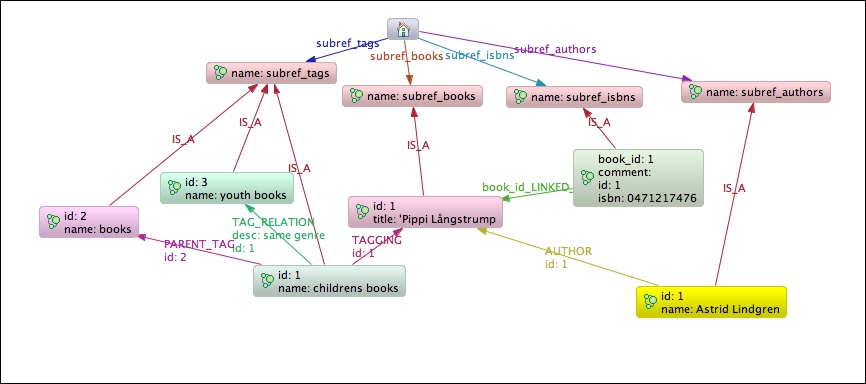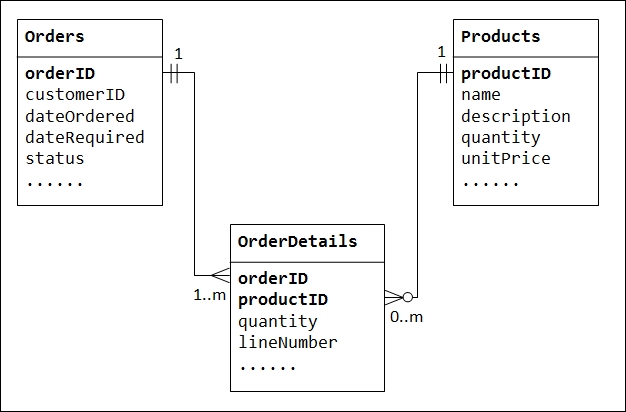Graph data comes in different formats, and sometimes it's a combination of two or more formats. It is very important to learn about the various ways to import data having different formats into Neo4j. In this recipe, you will learn how to import data present in an RDBMS database, such as MySQL, SQL Server, into the Neo4j graph database server. Following is a sample figure for a graph:

To get started with this recipe, install Neo4j by using the steps from the earlier recipes of this chapter.
The data from RDBMS can be imported by using the two methods described here.
Peter Neubauer, the man behind the Neo technology, has developed an excellent tool for this purpose, called the Neo4j SQL importer tool, which takes SQL dumps. The tool can be cloned from his repository over GitHub, which is available at https://github.com/peterneubauer/sql-import.
Custom scripts can be written for a particular RDBMS schema, which is more useful as it is designed by keeping the schema in mind. Take an example of the following schema:

The Orders and Products tables will represent nodes in Neo4j, while OrderDetails will represent the relationships between them. Relationships can be in both the directions. So, starting from the Products node, we can easily find out how many different Orders have been made for that product and vice versa.
In the SQL import tool, most of the things revolve around the primary key. Each of the columns can be made a node, and it will have a relationship with the node that is storing the primary key. In the case of relationships with other tables, the relationship will be made on the foreign key.



